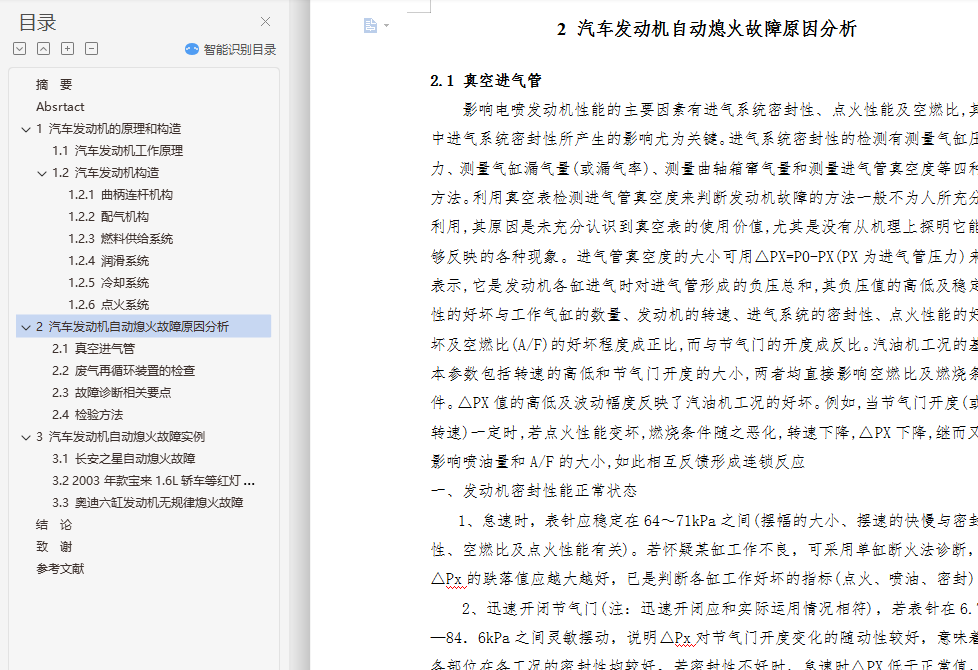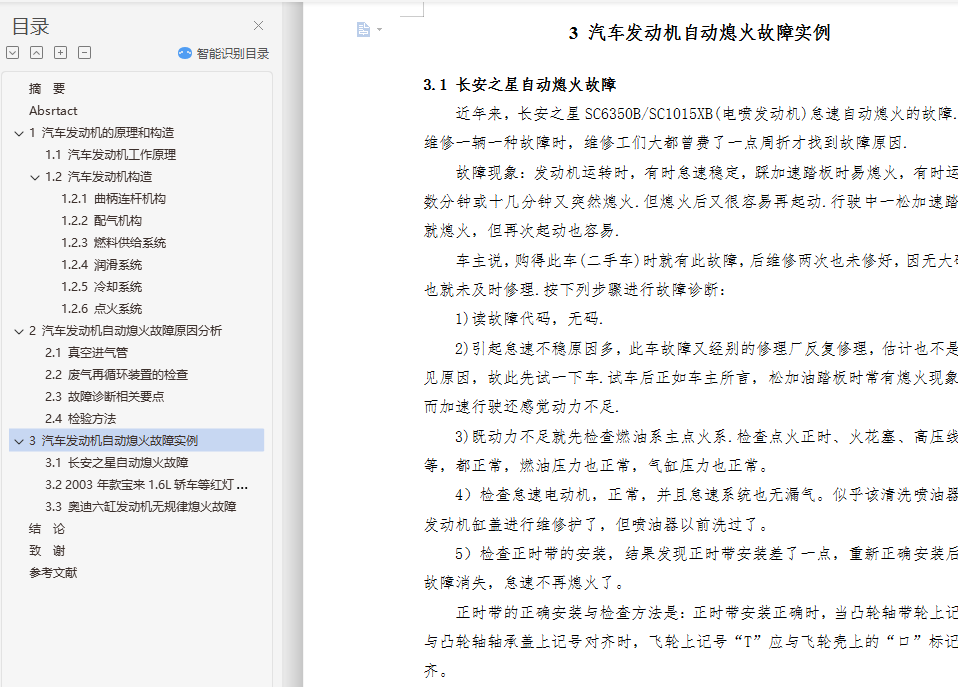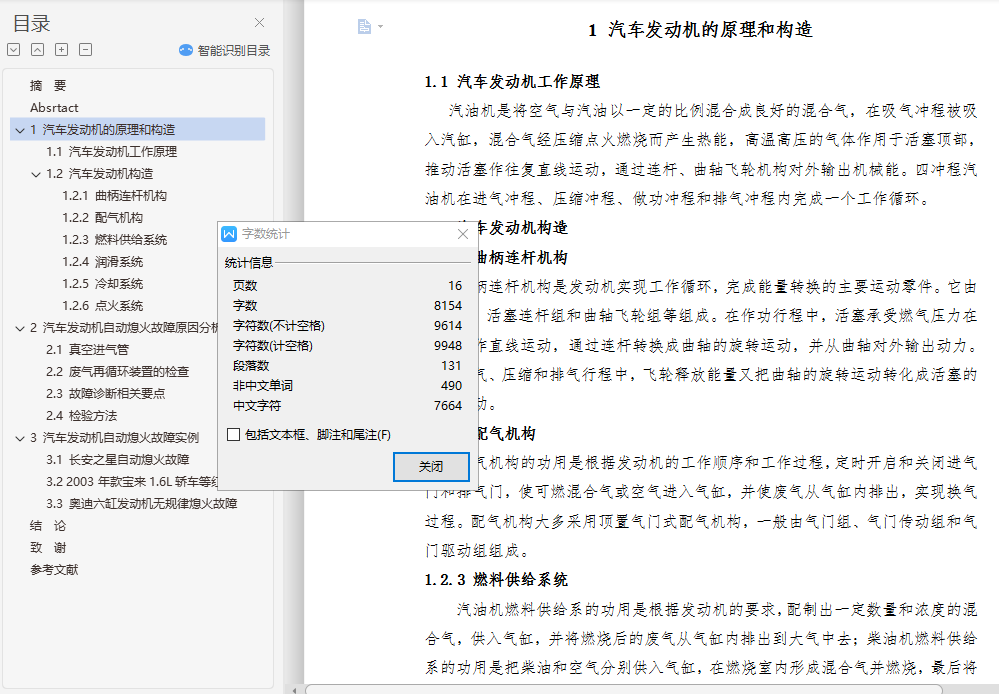信阳涉外职业技术学院
毕业论文
论文题目:发动机自动熄火的诊断分析
系 部: ********系
专 业: *****************
班 级: *********
学生姓名: **********
学 号: ************
指导教师: ************
201*年 *月** 日
摘 要
在汽车技术日新月异的今天,电脑控制技术已经应用到车的各个系统,各种新结构、新技术的不断涌现,使汽车维修人员面临着更大的挑战。汽车维修已从以前的那种修理工最好当,怎么拆装怎么装的状况转变成一个技术含量高、难度大的工种。现代的修理技术的特征表现为“七分诊断,三分维修”。发动机的故障的具体方法是多种多样的,关键是如何找出规律,积累经验,把感性认识上升到理性认识,再用理性认识指导维修实践。随着电子控制技术的进步,各国加大了对汽油机直喷技术的研究。三菱公司与大众公司相继推出了批量生产的新机型,欧美一些著名研究机构与生产企业如AVL、FEV、Bosch等也公布了各自的研究成果。
关键词:发动机 原理 构造 故障诊断
Diagnosis and Analysis of engine automatic flameout
Absrtact
with the rapid development of automobile technology,computer control technology has been applied to various systems of the vehicle,a variety of new structures,new technologies continue to emerge,so that automobile maintenance personnel are facing greater challenges. Car maintenance has changed from the kind of repairman who used to be the best,how to disassemble and install into a technical and difficult type of work. The characteristics of modern repair technology are "seven-point diagnosis and three-point maintenance". The specific methods of engine fault are various,the key is how to find out the law,accumulate experience,raise the perceptual understanding to rational understanding,and then guide the maintenance practice with rational cognition. With the electron With the progress of control technology,countries have increased the research on gasoline engine direct injection technology. Mitsubishi and Volkswagen have launched new models of mass production one after another,and some famous research institutions and production enterprises in Europe and the United States,such as AVL,FEV,Bosch,have also published their own research results.
Key words:engine principle structure fault diagnosis
目 录
摘 要 I
Absrtact II
1 汽车发动机的原理和构造 1
1.1 汽车发动机工作原理 1
1.2 汽车发动机构造 1
1.2.1 曲柄连杆机构 1
1.2.2 配气机构 1
1.2.3 燃料供给系统 1
1.2.4 润滑系统 1
1.2.5 冷却系统 1
1.2.6 点火系统 2
2 汽车发动机自动熄火故障原因分析 3
2.1 真空进气管 3
2.2 废气再循环装置的检查 4
2.3 故障诊断相关要点 4
2.4 检验方法 6
3 汽车发动机自动熄火故障实例 7
3.1 长安之星自动熄火故障 7
3.2 2003年款宝来1.6L轿车等红灯时易熄火故障 7
3.3 奥迪六缸发动机无规律熄火故障 8
结 论 10
致 谢 11
参考文献 12






